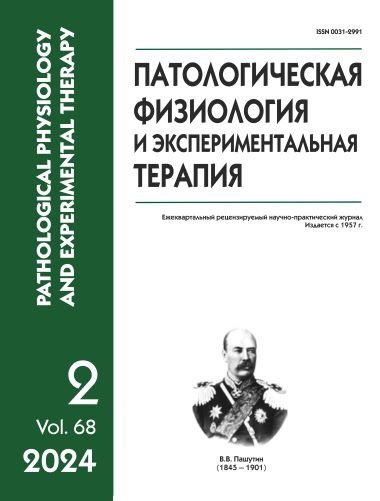Sexual dimorphism of age-related changes in the functional activity and expression of classical inward rectifying potassium channels Kir2 in the aorta and heart of rats
Abstract
Background. Biological aging is recognized as the most significant risk factor for the development of cardiovascular diseases, which remain the leading cause of death in the world. Research into the mechanisms of aging is becoming particularly relevant as the number of elderly people increases every year. There are still significant gaps in understanding the processes underlying the aging of blood vessels and the heart, and there is virtually no data on the influence of gender on the development of age-associated pathology. In recent years, active research has been carried out on the role of ion channels in the development of various diseases. Significant progress has been made in understanding the contribution of the classical inward rectifying potassium channels Kir2.x to the regulation of vascular and myocardial contractility under normal conditions, but there is no clear understanding of their involvement in the development of age-related pathology. There is no data on gender-related changes in the properties of these channels. The aim of the study is to assess the effect of age and sex of animals on the functional activity and expression of Kir2.1 and Kir2.4 channels in the aorta and heart of rats.
Methods. The studies were carried out on young (3 months) and aged (18 months) male and female Wistar rats. The force of contraction of isolated fragments of the thoracic aorta was was measured in isometric mode. The expression of the Kcnj2 and Kcnj14 genes, respectively, Kir2.1 and Kir2.4 channels in the aorta and in various parts of the heart was assessed using quantitative polymerase chain reaction.
Results. Incubation of vessels with the Kir2.x channel blocker BaCl2 (100 μM) led to an increase in the contractile response of the aorta of young rats of both sexes in response to exposure to increasing concentrations of serotonin (10-7 – 10-5 M). It has been established that during the aging process in male rats, the contribution of Kir2 channels to the formation of the basal tone of the aorta decreases, but their involvement in the implementation of the negative feedback mechanism activated by the influence of vasoconstrictors remains. Unlike males, in the female aorta Kir2 channels are not involved in the regulation of basal tone. During the aging process in females, the involvement of Kir2 channels in the negative regulation of aortic contractile responses is lost. In the aorta of old males, the level of expression of the Kcnj2 and Kcnj14 genes remained unchanged, while in females a twofold decrease in the mRNA content of Kir 2.4 channels was observed. It was found that, compared with females, the heart of males is most susceptible to age-related changes at the level of expression of the Kcnj2 and Kcnj14 genes of the Kir2.1 and Kir2.4 channels.
Conclusion. The data obtained suggest that females in old age have a higher risk of developing arterial hypertension, while males have a higher risk of developing heart disease. The identified sex differences should be taken into account when using Kir2 channel modulators as therapeutic agents for the correction of cardiovascular diseases in old age.






